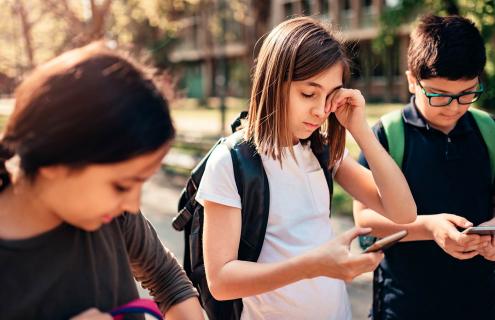
Conjunctivitis, or pink eye, is the most common eye problem in children. It’s called conjunctivitis because it’s an inflammation or infection of the conjunctiva, the transparent membrane found on the eyelid and the white part of the eyeball.
The vast majority of the time, pink eye is caused by a virus, much like the common cold. Less often, it’s a bacterial infection, and in the warmer months, it may come from allergies. Pink eye can occur in adults as well as children.
“The symptoms can include red eyes, both the white part and inside the eyelid,” explains Cheshire Medical Center Pediatrician, Deb Hansen, MD. “There’s also a watery or mucous discharge. Your lashes can get crusty, especially when you wake up in the morning. But pink eye is painless. It is irritating, but it doesn’t cause pain.”
Bacterial pink eye shows more pus drainage, while allergy-related pink eye symptoms include more watery eyes and more itching.
When to treat pink eye
Most cases of pink eye are viral and will resolve on their own within about one week. These don’t need medical attention. Home treatments can help manage the discomfort as the eyes heal. This can include warm, damp washcloth compresses to clear out crust in the eyelashes.
Dr. Hansen notes that if very young children show pink eye symptoms with pus around their eyes, caregivers should bring those children in to see the doctor. Pink eye along with ear pain is another time to seek medical attention.
“If it’s a baby under age two and they have pus drainage, then it’s a good idea to bring them in,” Dr. Hansen says.
Preventing viral and bacterial pink eye
Proper and frequent handwashing is the number one way to prevent pink eye. Washing with soap and water can reduce the chances of the virus or bacteria reaching the eyes as kids touch their faces. Teaching children not to rub their eyes or touch their faces with unwashed hands can also help keep pink eye at bay.
When handwashing, it’s best to stick to soap, water, and an alcohol-based sanitizer. Antibacterial soaps and cleansers can, ironically, make us less resistant to bacteria that make us sick. It can also damage the helpful bacteria on our skin we need to maintain good health.
Resources for teaching handwashing
- The Centers for Disease Control (CDC) have some tips for how to teach kids good handwashing skills.
- Help kids see how germs stick to their hands with fun activities, using cinnamon or glitter.
- Repeat the handwashing song twice while washing.
- Handwashing games are great to engage kids in the activity.
- Try a science experiment like growing hand germs on bread.
Cleaning smart phones and devices
Handwashing is far less effective at preventing viruses from spreading if your child immediately picks up a dirty phone after washing. It is a good idea to prohibit phone use at the dinner table for this reason. Clean smart devices daily with a solution of 60% water and 40% alcohol sprayed on a microfiber cloth.
If a child in your care shows pink eye symptoms that need medical attention, you can call the Cheshire Medical Center Pediatrics Department at 603-354-6666 during regular office hours and ask for a same-day appointment. Office hours are Monday through Friday, between 8:00 am and 5:00 pm.
You can also visit the Cheshire Medical Center Walk-In Care Clinic at The Center at Colony Mill, 149 Emerald St. in Keene.